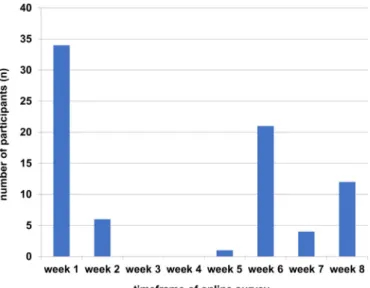Acceptability of a German multicentre healthcare research study: a survey of research personnels’ attitudes,
experiences and work load
Sebastian Blecha,
1Susanne Brandstetter,
2Frank Dodoo-Schittko,
2Magdalena Brandl,
2Bernhard M Graf,
1Thomas Bein,
1Christian Apfelbacher
2To cite: Blecha S, Brandstetter S, Dodoo- Schittko F, et al. Acceptability of a German multicentre healthcare research study: a survey of research personnels’
attitudes, experiences and work load. BMJ Open 2018;8:e023166. doi:10.1136/
bmjopen-2018-023166
►
Prepublication history and additional material for this paper are available online. To view these files, please visit the journal online (http:// dx. doi.
org/ 10. 1136/ bmjopen- 2018- 023166).
Received 29 March 2018 Revised 22 August 2018 Accepted 23 August 2018
1
Department of Anaesthesiology, University Medical Centre Regensburg, Regensburg, Germany
2


